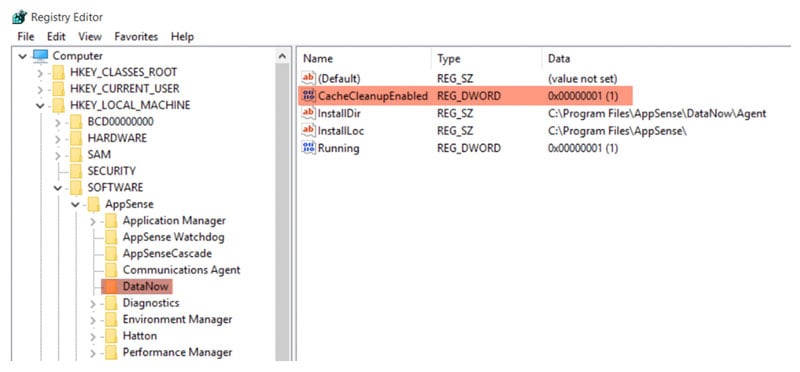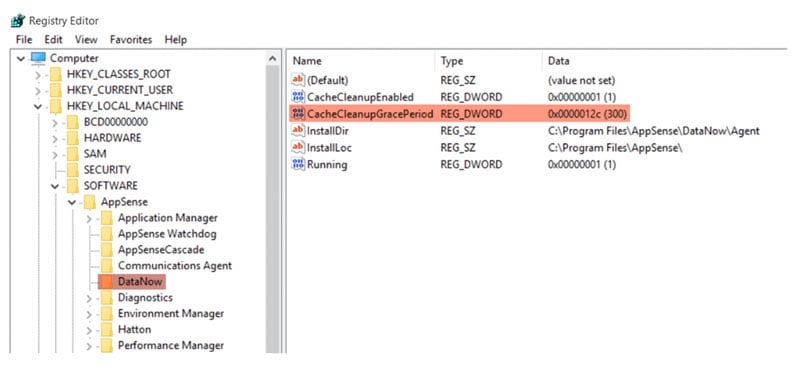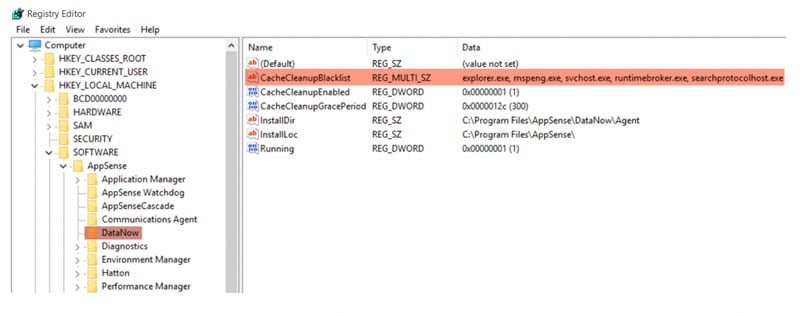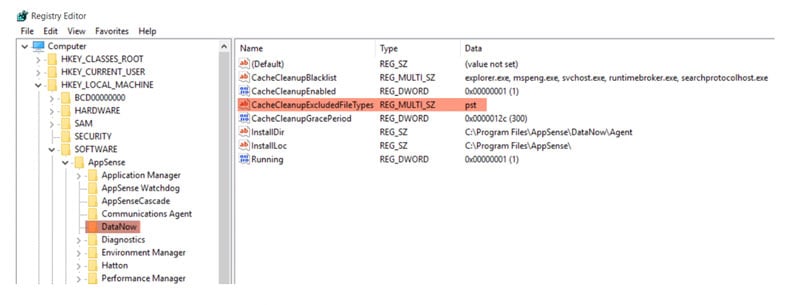NEW! File Director 2018.3 – Windows Client Cache Management
Ivanti File Director has been steadily growing its customer base in the last few years, solving problems related to sync and roaming of local files on Windows and other devices, and doing it securely over HTTPS with zero user disruption or change in user behavior.
As this solution has matured we wanted to provide new options to manage the time for which a user’s synced files remain on an endpoint. This solves problems for devices with limited storage capacity, as well as making the client more suitable for virtual and non-persistent desktops (where caching adds little benefit).
In File Director 2018.3 it is now possible to remove cached files on the endpoint, based on the last access time of files. Exclusions can be configured to ensure that certain files types, .PDF files for example, remain in the local endpoint cache, irrespective of their last access time, whilst other file types are removed after a period of inactivity.
How it works
This new feature is disabled by default and is configured via an engineering key. A configurable grace period value can be specified, in seconds, with a default period of 5 minutes. Any files within the local endpoint cache whose last access time is less than the current time minus the grace period, will be considered for deletion from the cache.
A file, or files, may be excluded from the cache clean-up by adding its file extension to a set of existing exclusions in the registry. A default exclusion is automatically set for .PST files, the Personal Storage Table format, used by Microsoft Outlook personal messages, calendar events and other mail items.
Once a file has been considered for deletion, File Director checks that all of the criteria have been satisfied:
- The File Director client is online
- The file is in-sync, i.e. no uploads are pending or in progress for the file
- The file exists both locally, on the endpoint, and remotely, in the designated file store (so as to avoid data loss)
If the above criteria are satisfied, the file, or files, will be marked for deletion from the endpoint cache. If any of the criteria is not met, File Director re-tries once the file is in-sync or when the File Director client becomes online.
If the file is locked and cannot be deleted, File Director will retry at the next File Director client logon or when the client becomes online from an offline state. However, typically a file close is triggered following the file becoming unlocked which would also re-queue the file for deletion.
Any file removed from the endpoint cache using this functionality will be audited.
Process exclusions automatically exist for applications such as explorer.exe and searchprotoclhost.exe that continually open and close files, as File Director is only interested in file access from the user themselves.
Enabling Windows Client Cache Management
To enable or disable Windows Client Cache Management, the following engineering key must be utilized:
- Key: HKLM\SOFTWARE\AppSense\DataNow\CacheCleanupEnabled
- Type: REG_DWORD
- Value: 1 (Enabled) or 0 (Disabled)

Configuring a Grace Period
The Grace Period defines how long File Director waits after a file close before it removes that file from the endpoint cache.
The default grace period is set to 300 seconds.
Setting the grace period to < 10 seconds will result in the value being automatically re-set to a minimum of 10 seconds. This is because some applications will still be in the process of initializing when File Director attempts to delete a file they are opening, which could result in Access Denied messages.
To set the grace period:
- Key: HKLM\SOFTWARE\AppSense\DataNow\CacheCleanupGracePeriod
- Type: REG_DWORD
- Value: 300 (Default)

Excluding processes from Cache Clean-up
To add a process exclusion (to ignore file access from specific apps):
- Key: HKLM\SOFTWARE\AppSense\DataNow\CacheCleanupBlackList
- Type: REG_MULTI_SZ
- Value: explorer.exe, mspeng.exe, svchost.exe, runtimebroker.exe, searchprotocolhost.exe (Default)

Excluding file types from Cache Clean-up
To add a file type exclusion:
- Key: HKLM\SOFTWARE\AppSense\DataNow\CacheCleanupExcludedFileTypes
- Type: REG_MULTI_SZ
- Value: pst (Default)

NOTE: any process exclusion or file exclusion engineering key change will be picked up automatically. However, all other engineering key changes require a File Director client logoff / logon or service restart before they are applied.
Summary
The new client cache management options provide an effective, low-maintenance way of ensuring the client cache sizes do not grow out of control, and that unwanted and unnecessary file data does not waste space on user devices. It also saves space in non-persistent sessions and virtual desktops where there is limited benefit in caching files.
For more information on Ivanti File Director, please see this page or join in the discussion on the Ivanti Community here.
